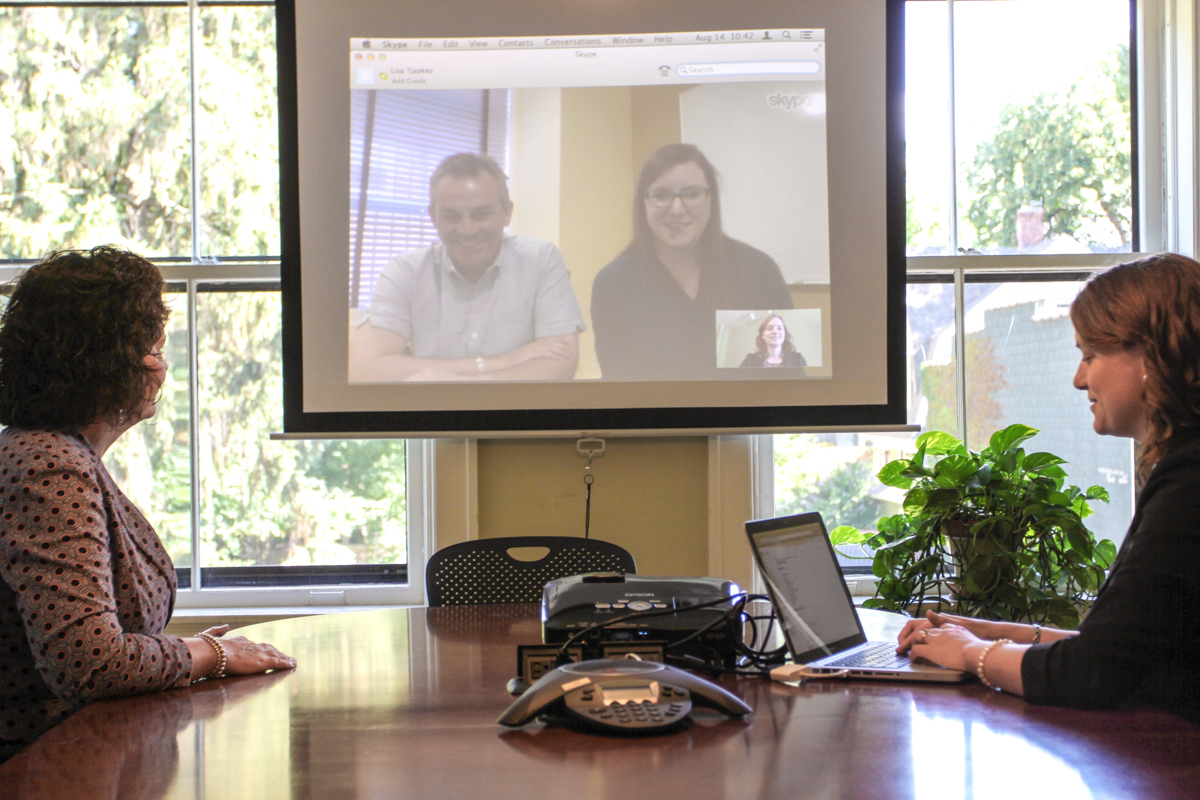Article summary
We know that a great deal of human communication is nonverbal in nature. We use our faces and bodies to express ideas and feelings that we just can’t get across via text or speech alone, and we interpret those same unconscious signals coming from others.
Face-to-face communication is invaluable when doing the kind of technical, complex, and often high-stakes work that Atomic does. This kind of communication:
- Exponentially increases the bandwidth of the channel we use to share and discuss ideas
- Spreads information between team members efficiently
- Enables low-friction collaboration, e.g. whiteboarding, pair programming, etc.
- Strengthens the bonds between teammates by allowing us to connect on a personal level
- Builds trust between our teams and our customers
These reasons and many others are why we strive to gather our teams in person whenever possible. Unfortunately, the geographic spread of our customers means that getting face time isn’t always possible. So, in its absence, we often turn to email, text, or, that most dreaded of business tools…
The conference call.
You’ve probably seen it go something like this:
- Someone sends out a meeting invite and then has to resend it again with the call information, or they have trouble attaching the meeting to the email.
- You finally get connected, and now garbled, disembodied audio is coming through a conference phone speaker in the middle of the room. You’re missing half the content of the meeting, and you can’t tell who’s talking to whom.
- The team is feeling disengaged, those who aren’t talking are starting to check out, and soon the meeting is just a waste of time for half the team.
So, how can you turn Conference Call Hell into a productive meeting for your remote team? Video meetings! All it takes is some thoughtfulness and a little prep time to make your meetings more natural, more engaging, and more useful by adding back that oh-so-important face-to-face connection.
Get Set Up
Make it super-easy to jump on a video call at any time.
- Pick a single, low-friction tool that’s as close to your daily workflow as possible. Recently, I’ve been using Slack calls for this. The interface is slick and easy to use, and all I need to do is hit one button in the channel to start a call that anyone on the team can jump into–no messing around with meeting invites.
- Sit down once, outside of any meetings, and figure out your AV setup. Check the quality of your network connection, do a sound test, see the camera work, and learn how to plug in everything so you’re not struggling with it every time you start a meeting.
- Pay special attention to your sound quality. I may be making a case for the camera, but a few dropped frames are no big deal. What is a big deal is losing half of the team’s new requirements because your audio cuts out. If you know your internet connection is flaky, see if you can call in via phone and only use the computer for video.
Turn on the Camera
Ideally, you want the viewer to feel as much like they’re in the room with you as possible.
- Place the camera at roughly your eye-level or higher. Anything lower means you’re looking down on the viewer, from their perspective. Looking up at the camera makes you look more engaged.
- Adjust the size of your preview window so that it’s big enough to check whether you’re in the camera frame, but not so big that you find yourself using it as a mirror–it’s hard not to be aware of our own reflections.
- Place the video feed of the caller on your screen as close to the camera lens as possible to more closely emulate eye contact.
- Invest in a wide-angle external webcam if you’re going to be making calls as a group. Being able to spread out naturally in a conference room is a lot more comfortable than crowding around a laptop camera, and it looks more professional, too. It also means the viewer can see the whole team and doesn’t need to guess the owner behind every disembodied voice.
Decide When to Use Video Calls
As often as possible! If you picked a good conference tool, starting up a meeting should be low overhead. Whether it’s a big sprint review or a five-minute question, it’s always worth the extra step to further strengthen your relationship with your teammates.
These changes to your workflow may require a bit of up-front work, but the investment will pay off in easier, more productive remote meetings, healthier team relationships, and a stronger end product!

